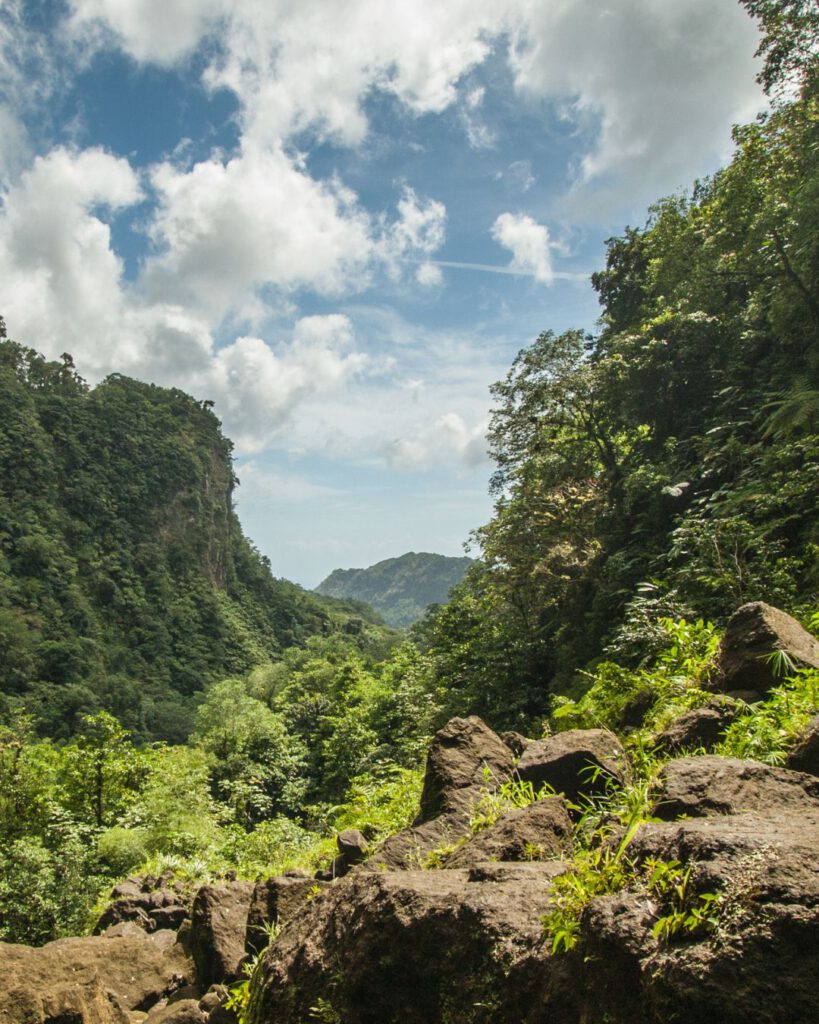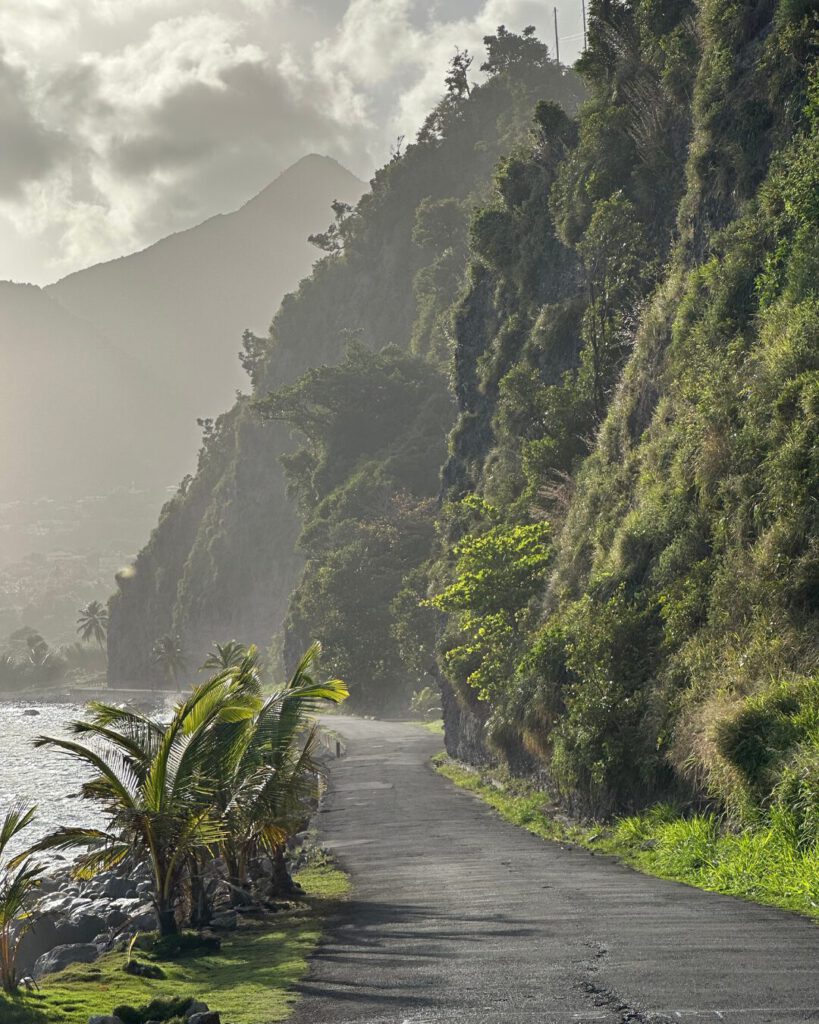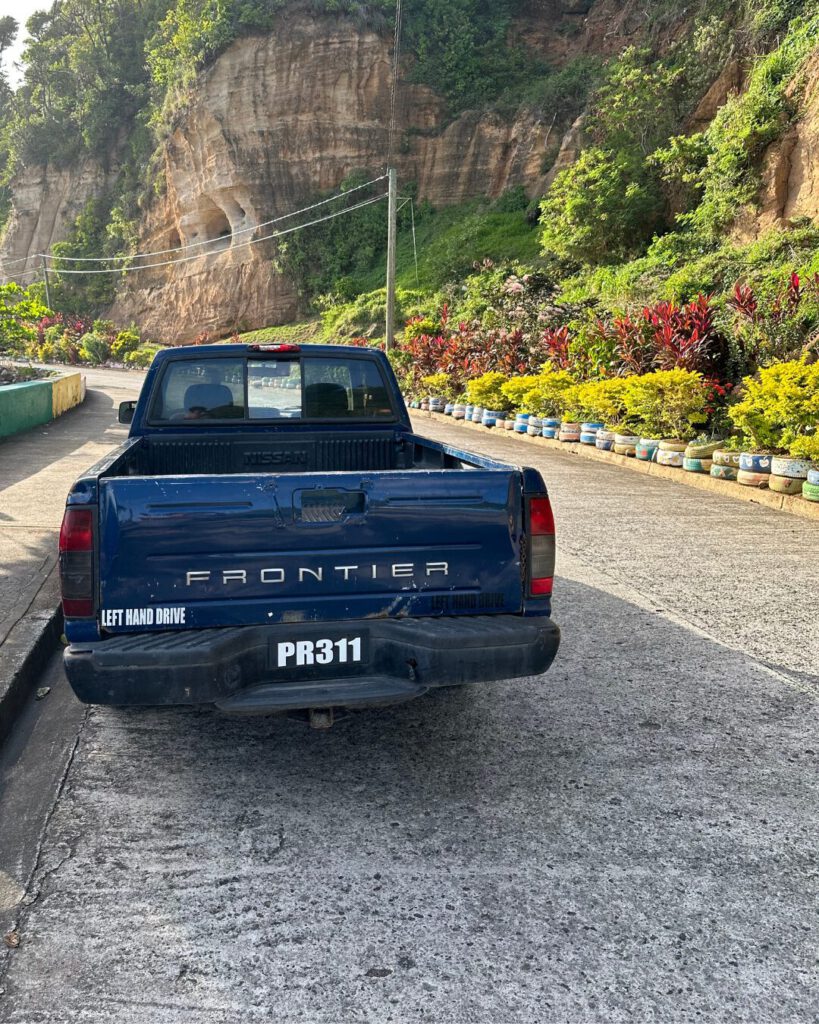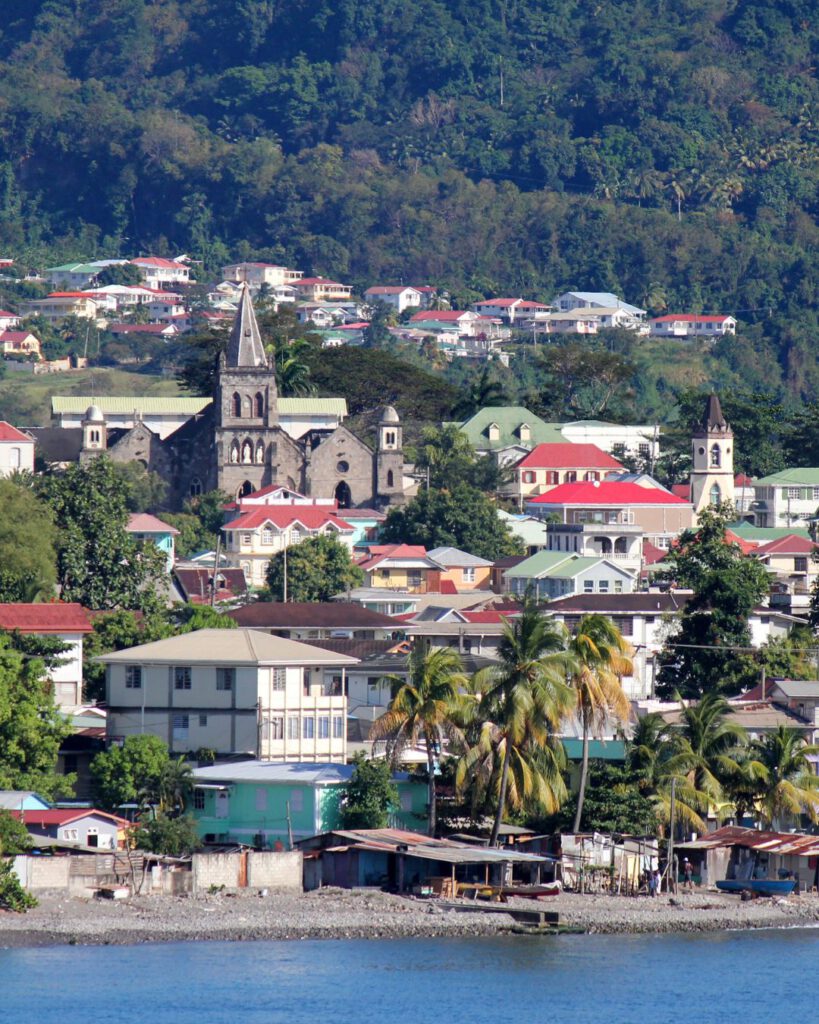Unless you are on a cruise trip, navigating Dominica requires a little bit of planning, some patience, and a sense of adventure, but it’s all worth it for the beauty that awaits.
Dominica (not Dominican Republic), known as the “Nature Island of the Caribbean,” offers breathtaking landscapes, remote beaches, and endless rainforest trails, but getting around can be tricky.
While the island’s compact size might make it seem like an easy destination to navigate, the reality is that its dense forests, sharp inclines, and narrow roads can turn a short trip into a longer, more thrilling journey.
In this article, I’ll explore the different transportation options available in Dominica, sharing tips, insights, and experiences to help you make the most of your travels.

Renting a Car in Dominica
If freedom and flexibility are what you’re after, renting a car is the most practical way to get around Dominica. The island’s bus system, while affordable, is unpredictable and doesn’t run frequently enough to be reliable for tourists. Renting a car allows you to explore at your own pace, stopping at hidden waterfalls, mountain trails, and secluded beaches along the way.
In simple words, unless you consciously want to travel without a car or you don’t have a driving licence, there is NO reason for you to NOT rent a car.
And yes! Driving in Dominica is not for the faint-hearted. The island’s has roads with sharp curves, steep inclines, and narrow paths that leave little room for error, but with low traffic outside big cities, I found driving here, not complicated or difficult at all.
Keep in mind: You’ll need to drive on the left side of the road, a feature that might be unfamiliar to some travelers.
Before you hit the road, here are a few things you should know:
- Mountain Roads: The roads in Dominica are some of the most challenging in the Caribbean. You’ll find hairpin turns, steep drops, and occasional blind corners. It’s common practice to honk the horn when approaching a curve to alert oncoming vehicles.
- Potholes and Road Conditions: Many roads, particularly those leading to more remote areas, are poorly maintained with large potholes and crumbling asphalt. Torrential rains can also wash out roads, so drive slowly and carefully.
- Car Rentals: Several agencies offer rentals in Dominica, including Eagle Car Rentals, Courtesy Car Rental, and Island Car Rentals. A compact car is sufficient for most routes, but a small 4×4 can provide extra comfort and security for those planning to venture deep into the island’s mountainous regions.
- Driving Permit: To legally drive in Dominica, you’ll need to purchase a local driving permit, which costs 30 Eastern Caribbean dollars (about $12). You can obtain this at the airport, rental agencies, or the Traffic Department office in Roseau. My recommendation is to send your paperwork via WhatsApp to the tour operator and they will take care of this.
If you want to compare prices with all companies together, check the different options at DiscoverCars and RentalCars
Read more: How to plan a road trip in St Vincent and the Grenadines

Taking Taxis: Convenience at a Cost
For travelers who aren’t comfortable driving or prefer a more relaxed way of getting around, taxis are a popular alternative. They are the preferred option for cruise travelers and they are available at both of Dominica’s airports, the cruise station and most hotels. Taxis offer a stress-free option for exploring the island. However, they can be quite expensive, especially if you’re traveling solo or covering long distances.
Prices are regulated, with fares ranging from EC$65 (around $24) for a ride from Douglas–Charles Airport to Roseau, to as much as $90 for a full day of sightseeing. It’s always a good idea to agree on a fare before starting your trip, as rates can sometimes be negotiated, especially if you’re traveling with other passengers.
One downside to relying on taxis is their limited availability after dark. If you plan on heading out in the evening, it’s best to book a taxi in advance, as finding one on the street can be challenging after sundown.
Be connected everywhere in the Caribbean
I used the Caribbean plan of Airalo and got a package for the whole region.
Click here to get your plan too.
Read more: How to plan a island hopping trip in the Caribbean

Traveling on Buses: The Budget Traveler’s Option
For budget-conscious travelers or those looking to experience Dominica like a local, the island’s minibus system offers the most affordable way to get around. These privately-owned buses operate without fixed schedules, departing when they’re full and taking routes that vary day by day.
Buses are identified by the letter “H” on their license plates, and fares range from EC$2 to EC$11 (less than $1 to around $4). However, comfort isn’t their strong suit. Buses are often overcrowded, and the winding mountain roads make for a bumpy, sometimes uncomfortable ride. Yet, the experience of squeezing into a crowded bus, with the sounds of local music blasting from the radio, offers a unique window into Dominican life.
Here are a few things to keep in mind when taking the bus:
- Departure Times: Buses have no set timetables, leaving only when they’re full. It’s best to ask locals for an approximate time if you’re unsure when the next bus will arrive. Most buses travel to and from Roseau in the morning and return in the afternoon, accommodating workers and students.
- Where to Catch a Bus: In Roseau, each village has a designated bus stop, though they aren’t always marked. Ask around for directions, and locals will gladly point you to the right place. In smaller villages, buses leave from the driver’s garage or a central spot known to locals as “the bus stop.”
- Safety and Comfort: Buses in Dominica are generally safe, but be mindful of your belongings, especially in crowded vehicles. Pickpocketing is rare, but it’s always good to stay alert.
- Know the Fare: Bus fares are regulated, but drivers may occasionally try to overcharge tourists. Ask other passengers how much they’re paying to ensure you’re getting a fair price.
If you’re not in a rush and don’t mind the occasional discomfort, taking the bus in Dominica is a cost-effective way to see the island.
NOTE: A good analogy to the bus driving is hitchhiking. I took the public bus from Roseau to the big airport (3 hours away) and it was a half a day adventure. It really felt like hoping for luck.
Find out what is happening in Dominica. I like to check the tours on Get Your Guide. This German company is dominating the market and offers the biggest variety of activities.
Read more: Best things to do in Dominica
Read more: How to plan a trip to Saint Lucia

Hitchhiking in Dominica
Hitchhiking in Dominica is not only common but also relatively safe, especially along major bus routes. Locals and travelers alike will often stand by the side of the road or at designated shelters, flagging down buses or passing cars. While this might sound unusual to some, hitchhiking here is a practical solution in an area where public transportation is sporadic.
If you’re considering hitchhiking, just keep in mind that it’s best to avoid doing so at night, and it’s always a good idea to trust your instincts when accepting a ride.
Just like in most Caribbean countries, getting around Dominica requires a blend of patience, resourcefulness, and a sense of adventure. Still, no matter if you’re winding through the mountains in a rental car, bouncing along in a crowded bus, or simply walking the streets of Roseau, each method of transportation offers a different perspective on this beautiful island.
At the end, no matter how you choose to get around, Dominica’s rugged landscape, lush rainforests, and welcoming locals ensure that every journey is as memorable as the destination itself.
If you are looking for a reliable travel insurance in the Caribbean, EKTA is a good choice to take a look. Click here and compare their policies for this part of the world.






